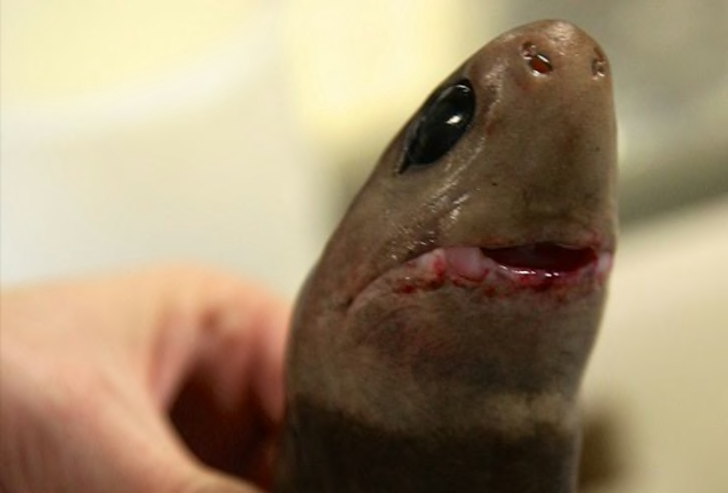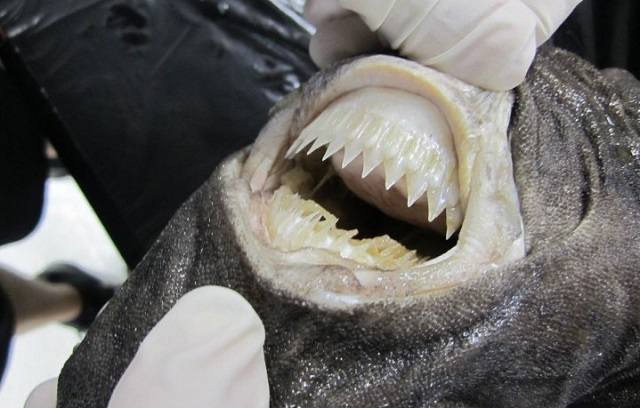


Antibiotic prophylaxis for marine bacteria is recommended. Immediate life-saving hemorrhage control administered by personnel accompanying the swimmers on the open water is important for preventing morbidity and mortality. Wounds may penetrate down to and through the fascial level. Open water swimmers crossing the deep waters between the Hawaiian Islands at night are most at risk for cookiecutter shark bites. Two of 3 patients were treated with operative management. Tetanus toxoid was updated, and prophylactic antibiotic coverage, including doxycycline for Vibrio spp., was administered. All were hemodynamically stable upon ED arrival and did not require blood products. Patients had prolonged transport times to the emergency department (ED), averaging 73 minutes, due to their injuries occurring on the open water. They were injured swimming over waters with depths of greater than 2000 feet at night. All 3 patients sustained nonfatal cookiecutter shark bite circular wounds measuring between 8-13 cm in diameter.

Trauma registry data and medical records were reviewed in patients treated for cookiecutter shark bites at The Queen's Medical Center in Honolulu, Hawai'i. A retrospective review of the State of Hawai'i Division of Aquatic Resources Shark Incidents List was conducted between March 1, 2019, and July 31, 2019.
#Cookie cutter sharks series#
This report is the first case series of cookiecutter shark bites on live humans. These sharks are too small to be taken by most fishers.In a 5-month period in 2019, 3 long-distance swimmers sustained cookiecutter shark-related injuries while attempting to cross the Ka'iwi Channel between the Hawaiian Islands of O'ahu and Moloka'i. Reported to have attacked rubber sonar domes on nuclear submarines and there is a case (GSAF 2009.03.17) in which a long-distance swimmer was bitten by a Cookiecutter shark. Once cut out, the shark pulls free, holding the plug of tissue by its hook-like upper teeth and leaving behind a crater wound.
#Cookie cutter sharks skin#
Its thick lips and modified pharynx are used to attach itself to the prey, then razor-sharp lower teeth bite into the skin and twisting movements cut out a plug of flesh. They are an ectoparasite on large fish and cetaceans, which are possibly lured to the shark by its bioluminescent light organs. They probably migrate vertically from deep water to midwater or surface at night. Reproduction – Presumably ovoviviparous, with about 6-7 pups per litter.Ĭookiecutter sharks are poor swimmers, and generally only caught at night. Prey – Feeds on deepwater fish, squid, and crustaceans. Its lower teeth are swallowed as they are replaced in rows (perhaps to recycle calcium). General – The shark has a large, oil-filled liver, body cavity, and small fins which suggest a neutral buoyancy (or may compensate for highly calcified skeleton). One shark, a strange species of dogfish, the cookiecutter shark, (Isistius brasiliensis) is invisible to daytime surface dwellers. These sharks are often found near islands, which are possibly their pupping grounds or where concentrations of prey are located.Ītlantic, southern Indian and Pacific Oceans. It can range from the surface to more than 11482.9 ft deep, but usually range from 278.9 to 11482.9 ft. The shark is a wide-ranging tropical oceanic shark, epipelagic to bathypelagic. The shark has large, triangular lower teeth in 25-31 rows. The maximum length for males is more than 1.3 ft, and for females it is greater than 1.6 ft. Males mature at a length of 1 to 1.2 ft, while females mature at 1.2 to 1.4 ft. Luminous organs cover its lower surface except for the fins and collar, which glow bright green. Medium grey or grey-brown with light-edged fins and a prominent dark collar mark around its throat. The shark has suctorial lips, its dorsal fins are set far back, and it has a large, nearly symmetrical paddle-shaped caudal fin with a long ventral lobe. A small cigar-shaped shark with a very short bulbous snout.


 0 kommentar(er)
0 kommentar(er)
